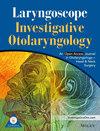National Trends in Treatment of Acute Unilateral Vocal Fold Paralysis at Tertiary Care Voice Centers
Abstract
Objective
Acute unilateral vocal fold paralysis (UVFP) management differs across the United States. This study aims to characterize current trends in UVFP treatment at US tertiary care voice centers.
Data Sources
A survey was distributed to laryngologists at 51 tertiary care voice centers within the CoPE (Vocal Cord Paralysis Experience) Collaborative.
Review Methods
Participants provided information on voice center, laryngologist, and speech-language pathologist (SLP) characteristics, diagnostic practices, treatment decision-making, and therapies offered for acute UVFP (symptoms present for ≤ 6 months). National trends in diagnostic and treatment practices were evaluated.
Results
Among the 51 CoPE centers, 48 completed the questionnaire (17% Northeast, 33% South, 35% Midwest, 15% West). Most centers (77%) had 1–2 laryngologists managing acute UVFP, with SLP availability varying widely (0–8+ per site). Diagnostic practices varied significantly: only 26% of centers routinely measured mean airflow during phonation, 47% recorded maximum phonation time (MPT), and 53% assessed GRBAS. Treatment commonly included vocal fold injection augmentation, alone or combined with voice therapy, with injections typically administered 3–4 weeks after diagnosis (83%). Hyaluronic acid (95%), PROLARYN GEL (60%), and calcium hydroxyapatite (56%) were the most frequently used materials. Injection procedures were performed “often” in clinic settings (90%) and “rarely” or “never” in the operating room (42%) and hospital bedside (56%).
Conclusion
Significant variability exists in the diagnostic testing, evaluation, and treatment of acute UVFP across tertiary care centers. Future studies are warranted to explore the causes of these variations and assess the role of multidisciplinary approaches in optimizing UVFP care.
Level of Evidence
3.


 求助内容:
求助内容: 应助结果提醒方式:
应助结果提醒方式:


